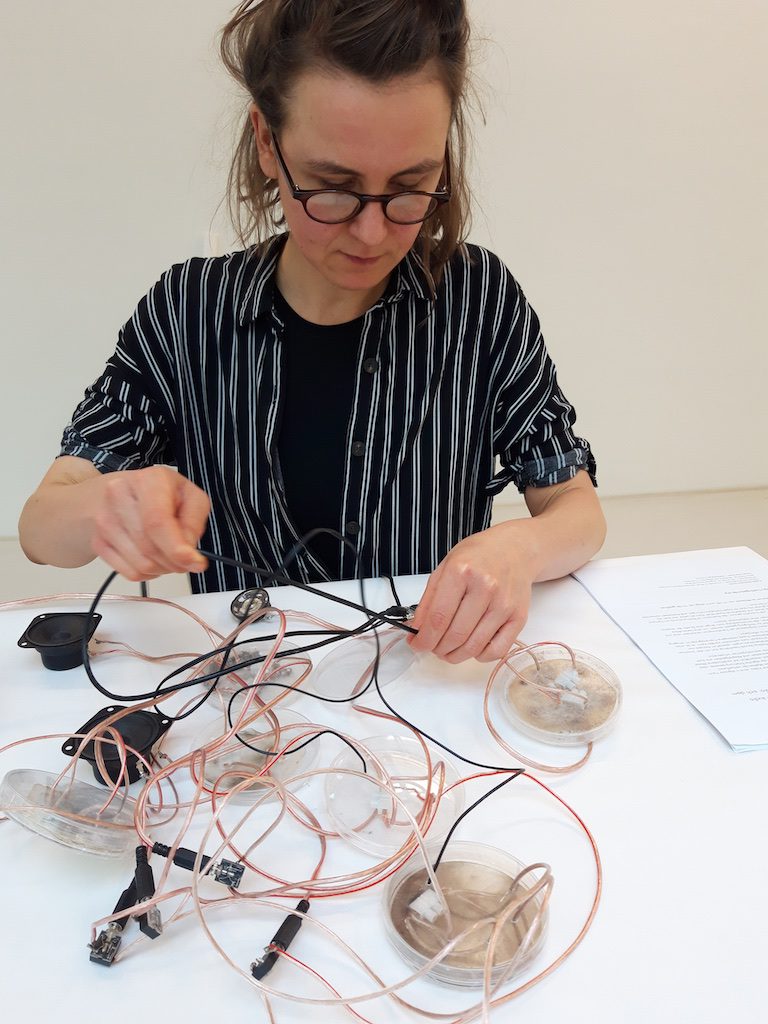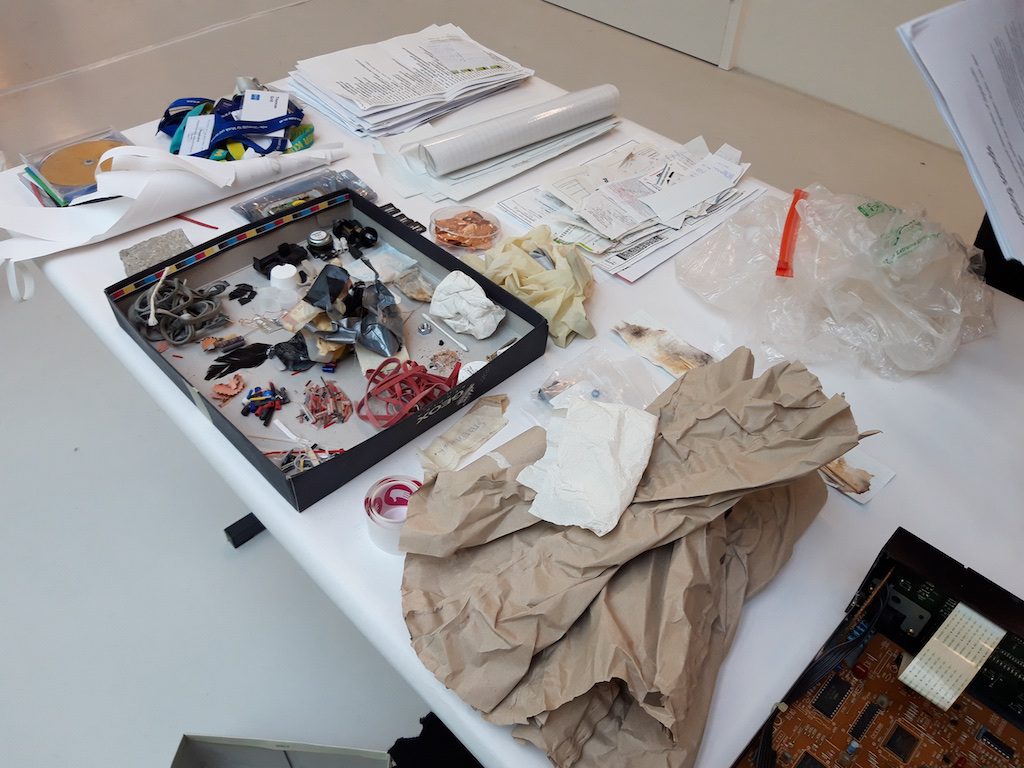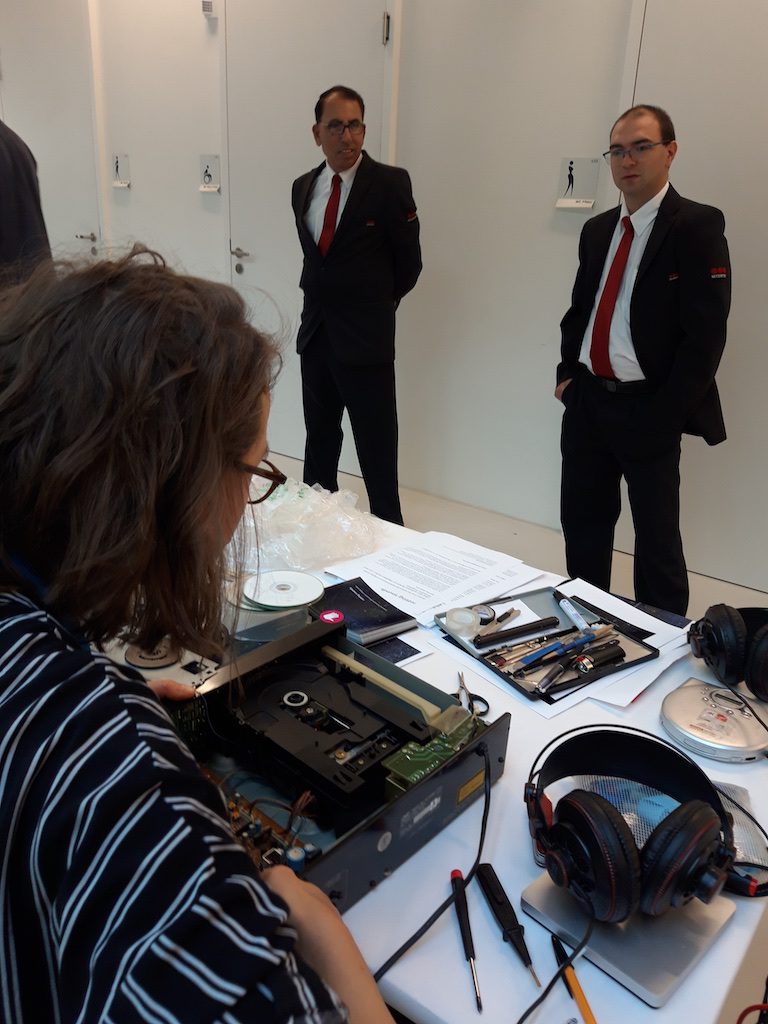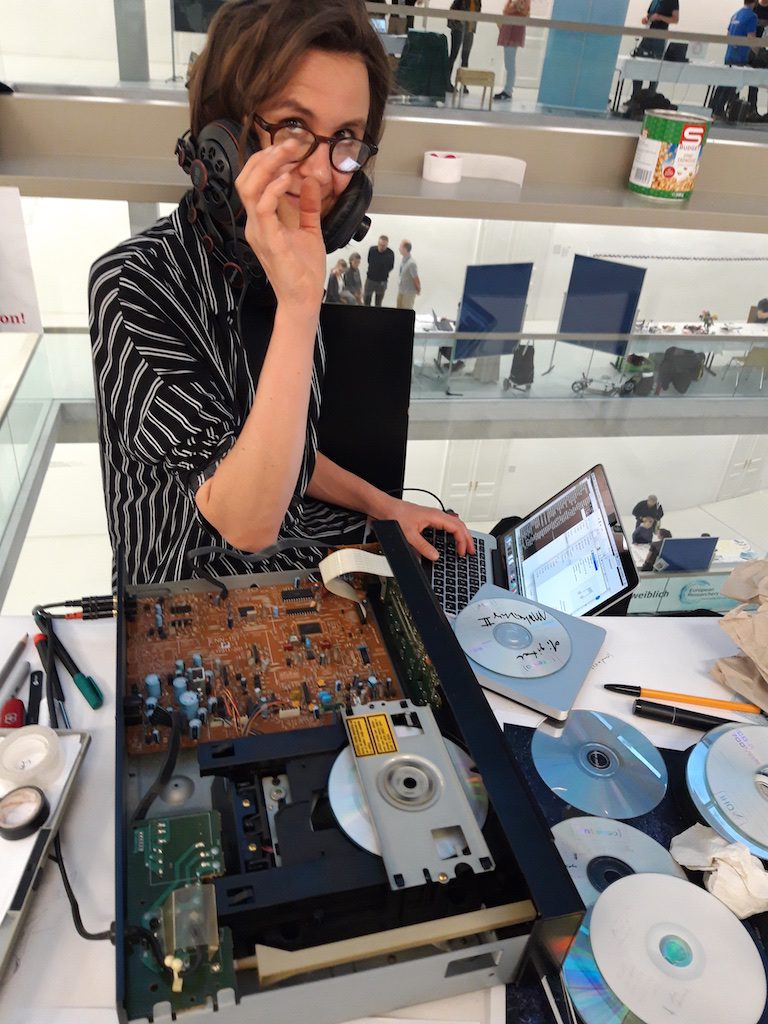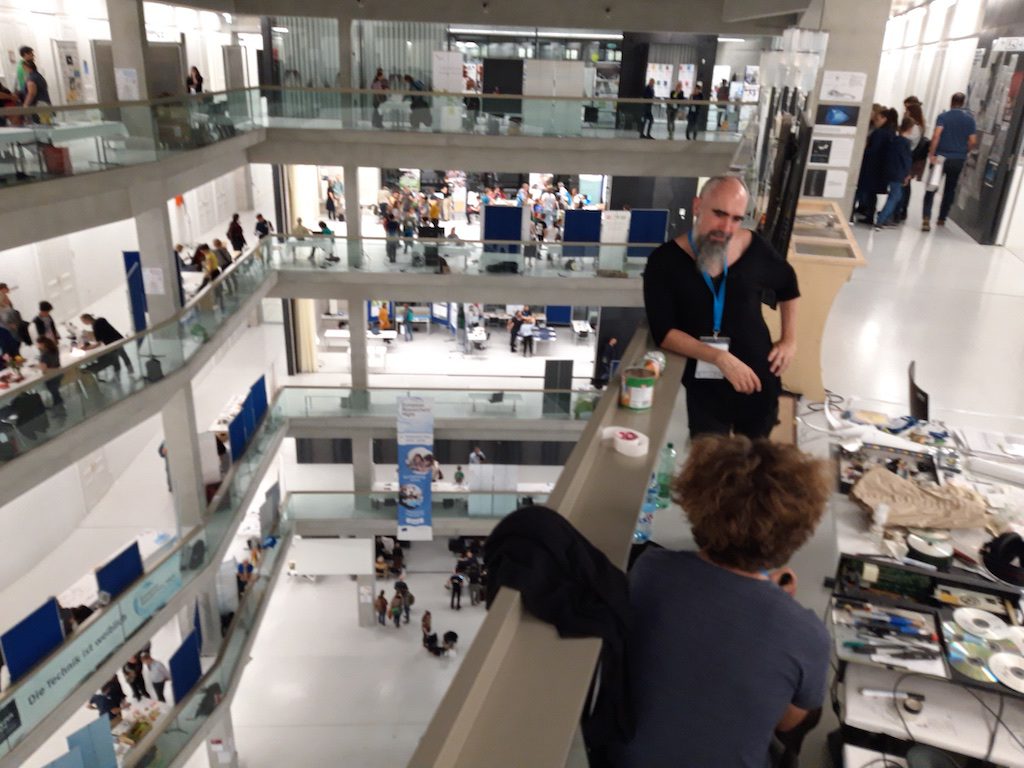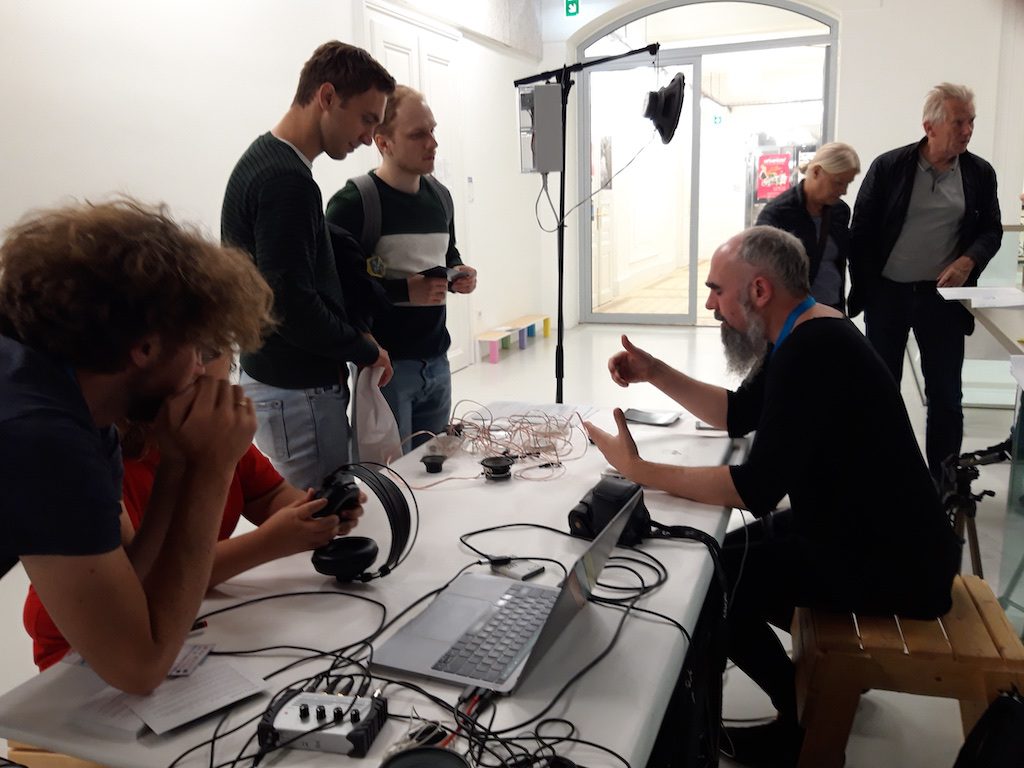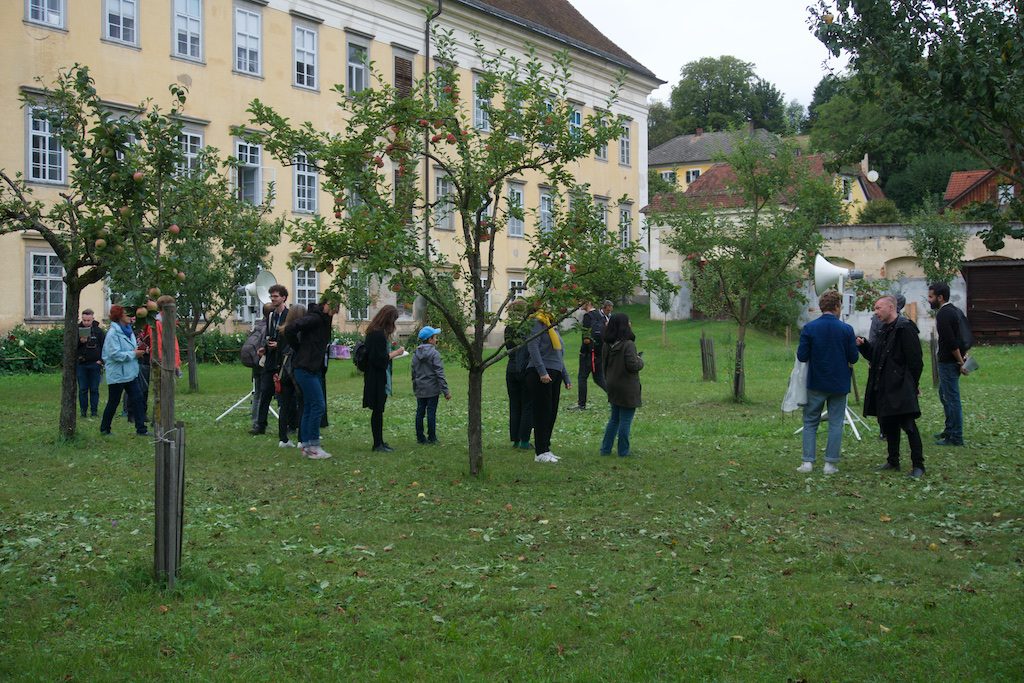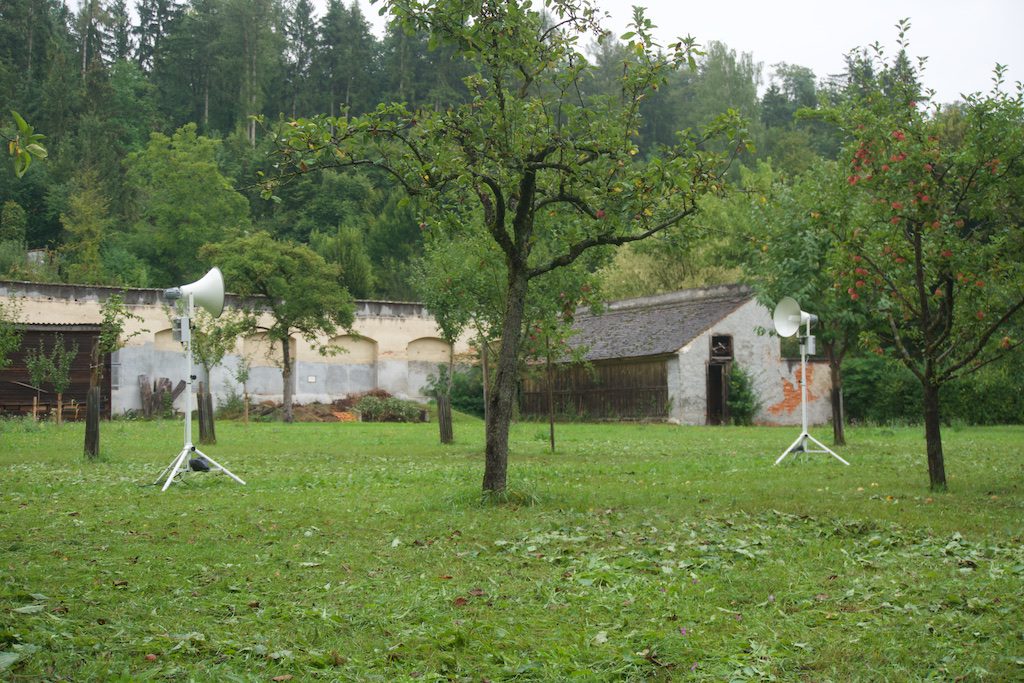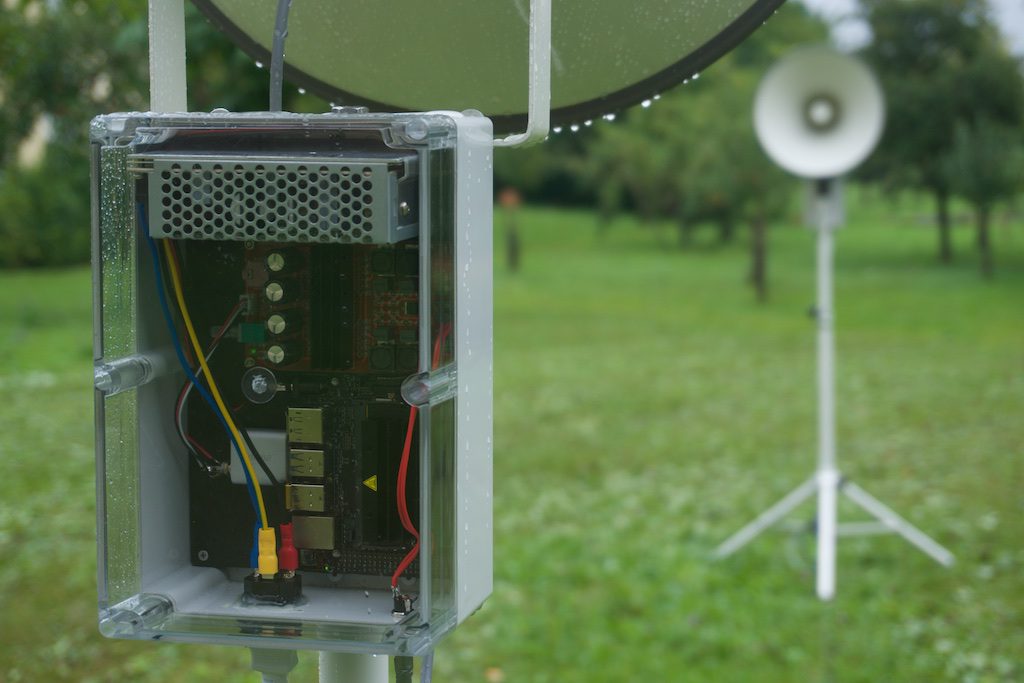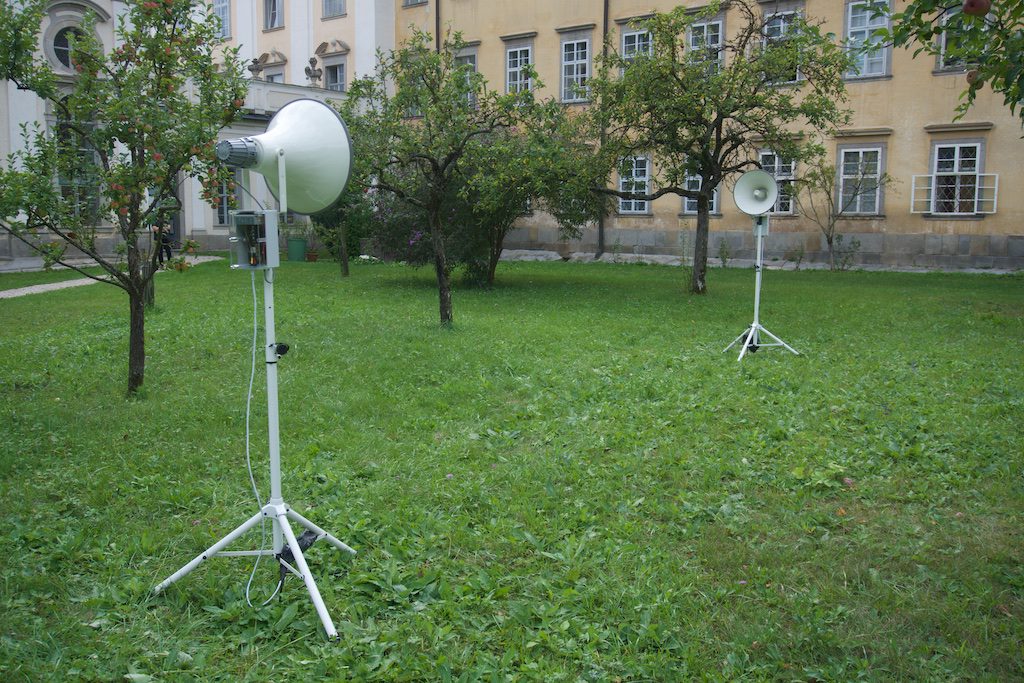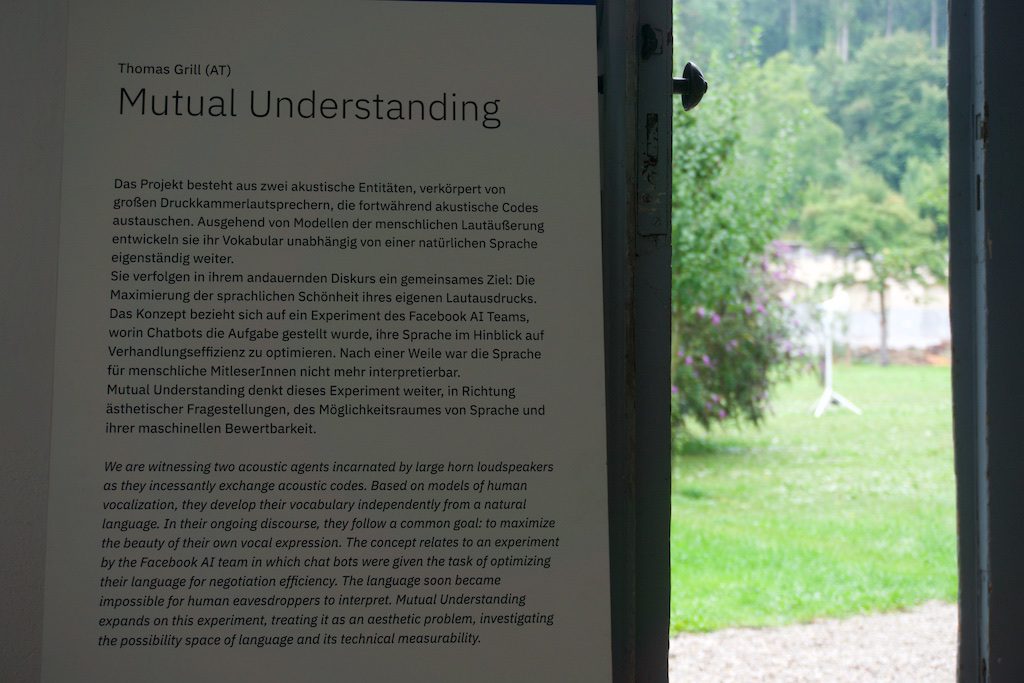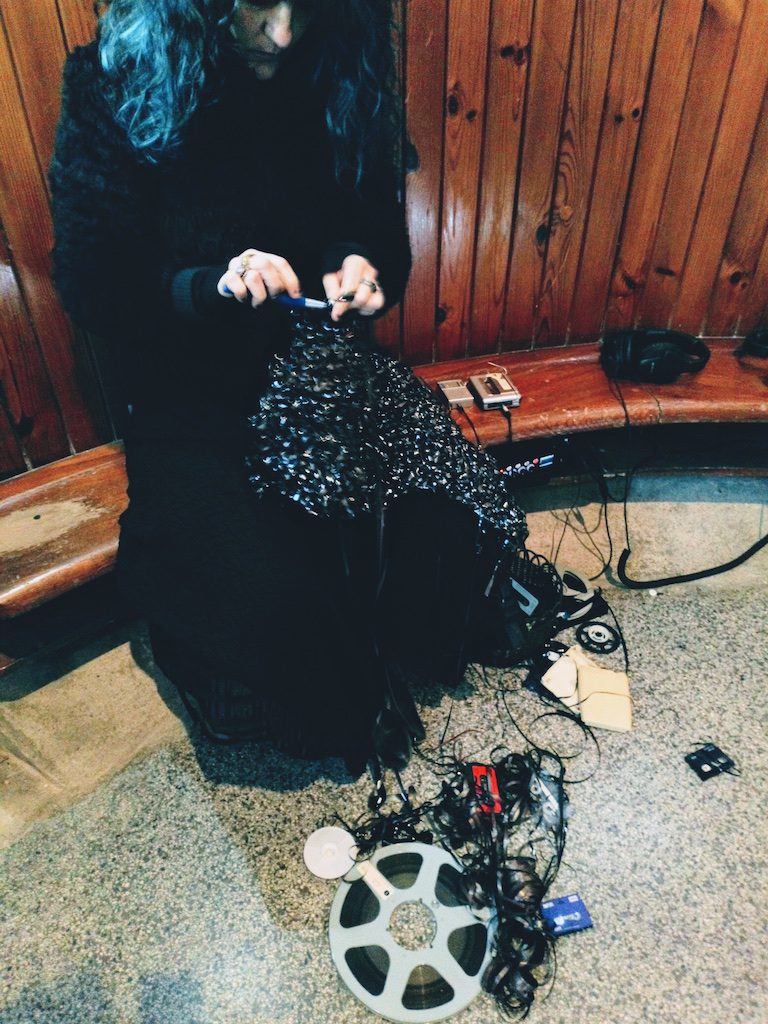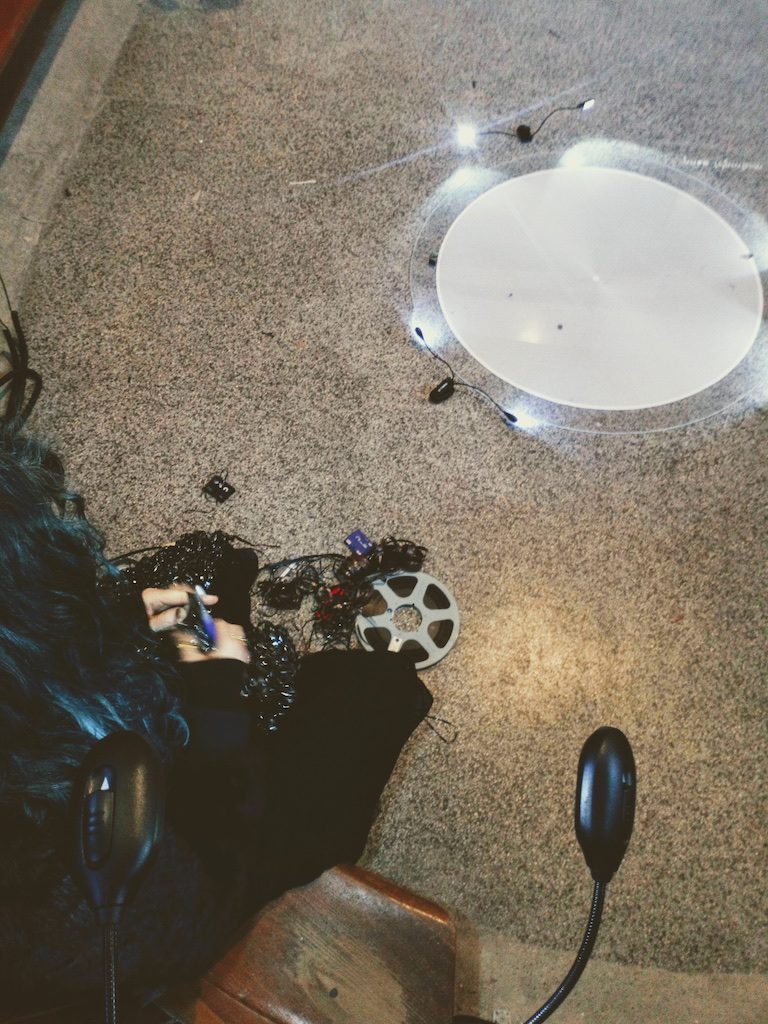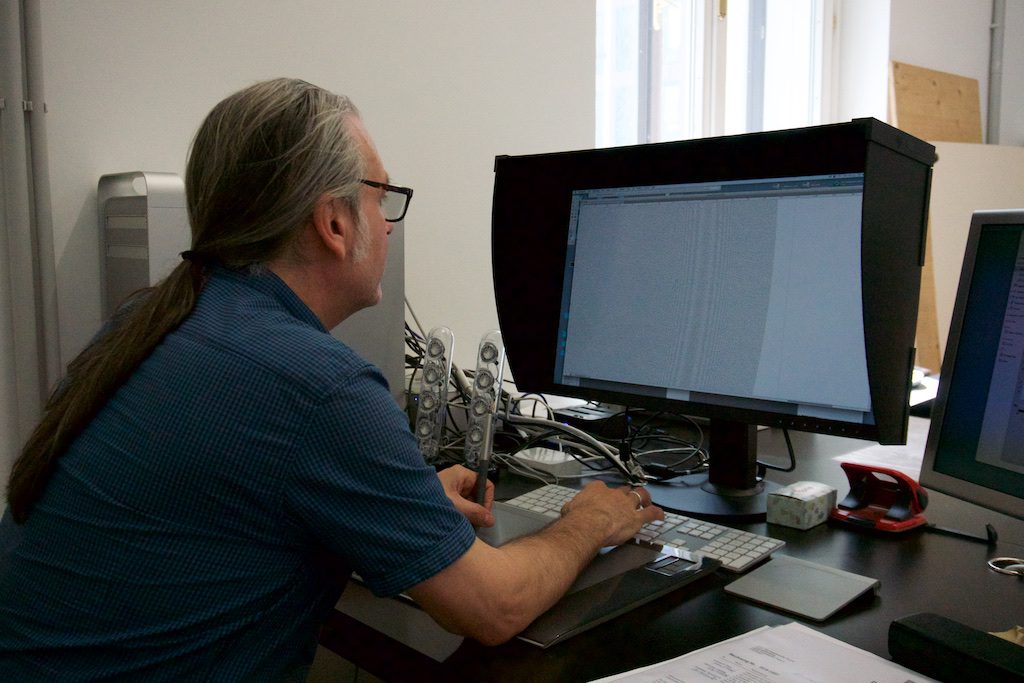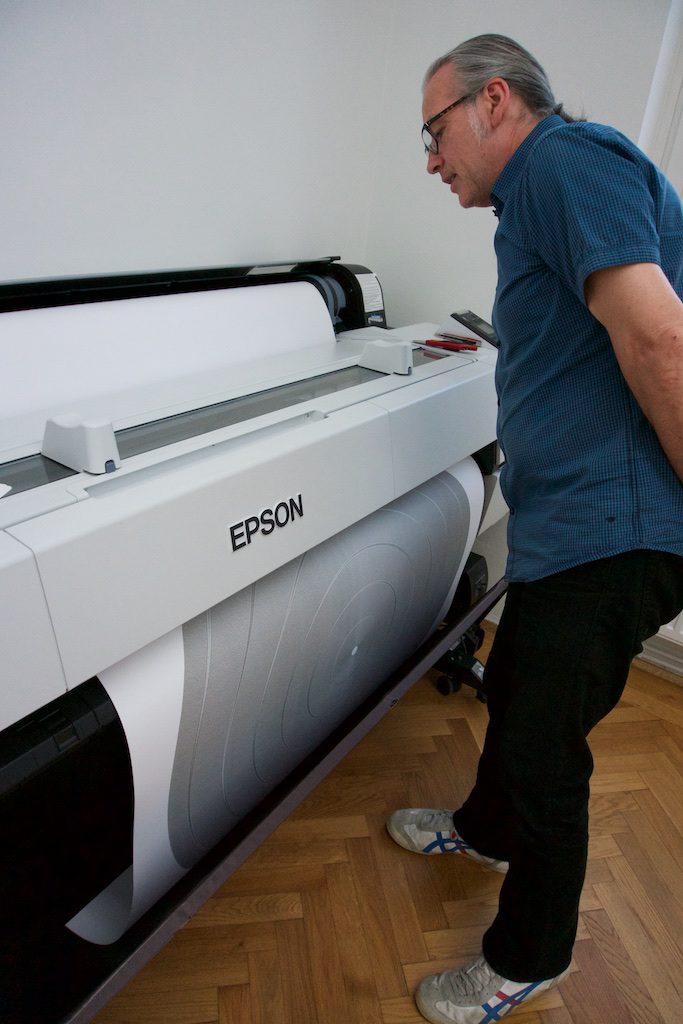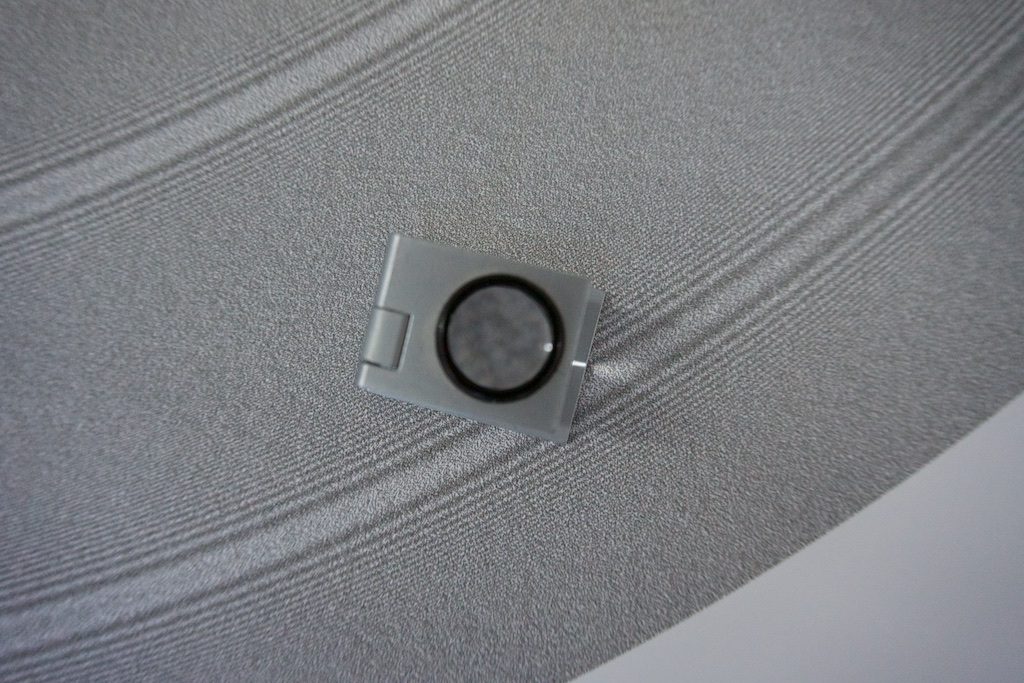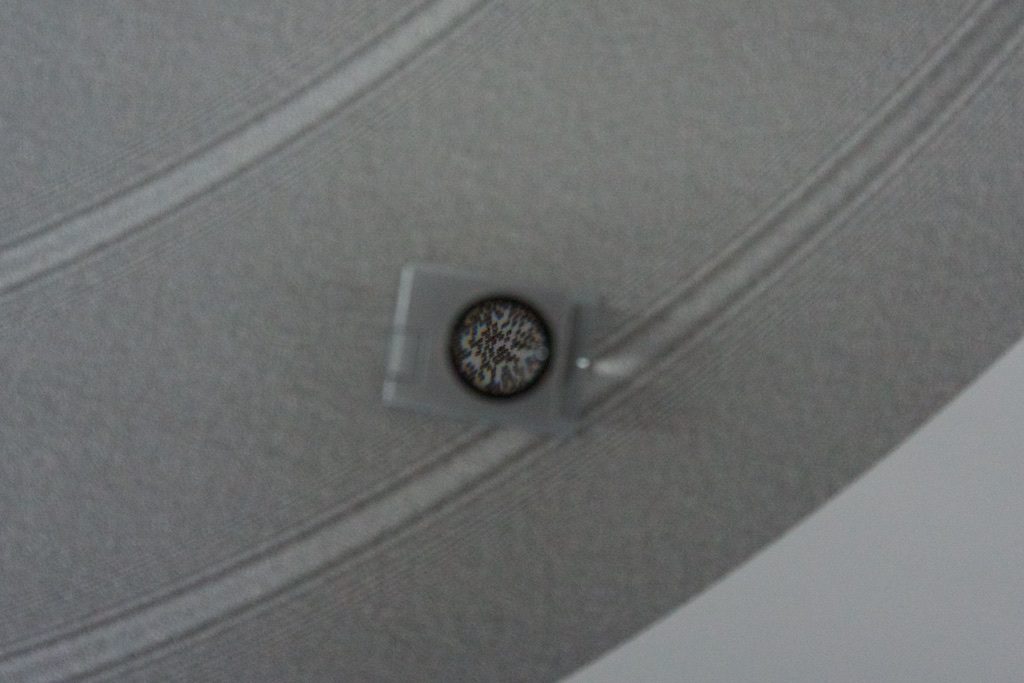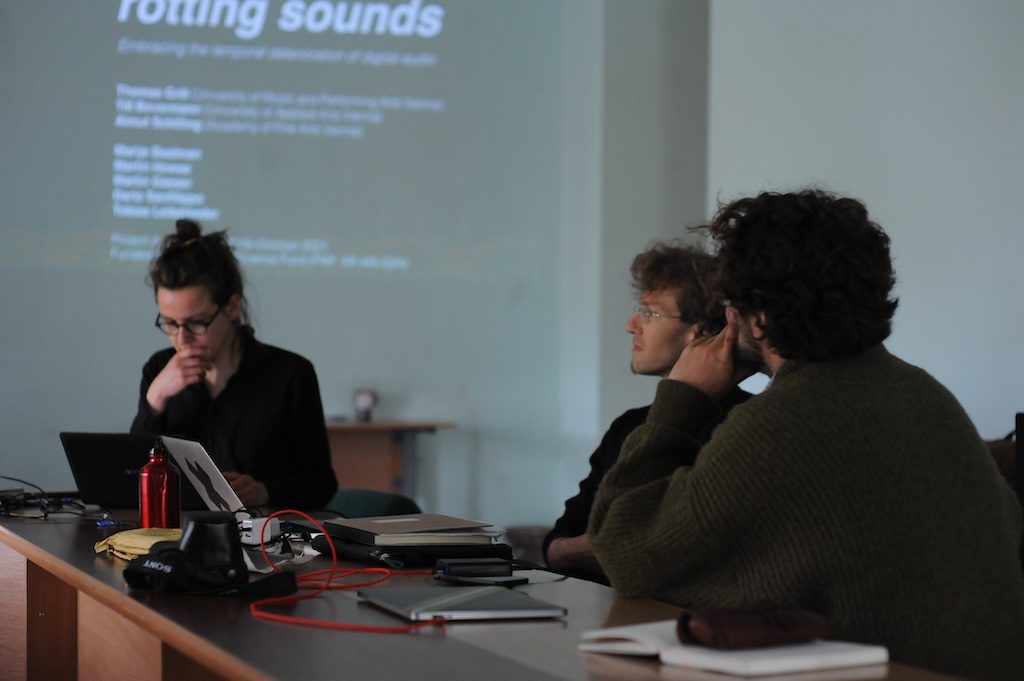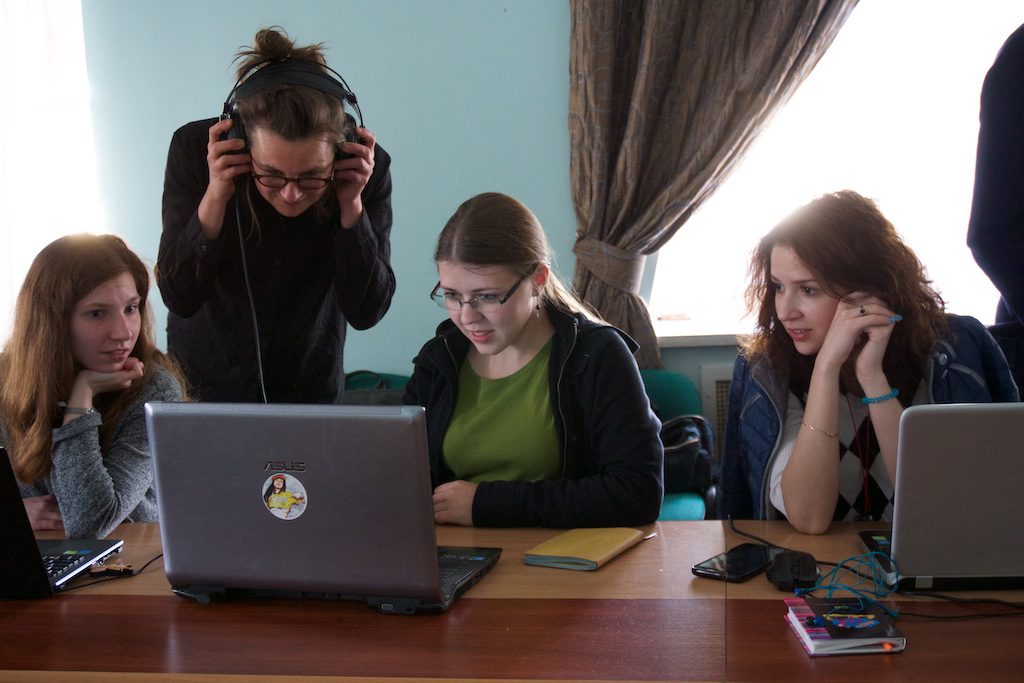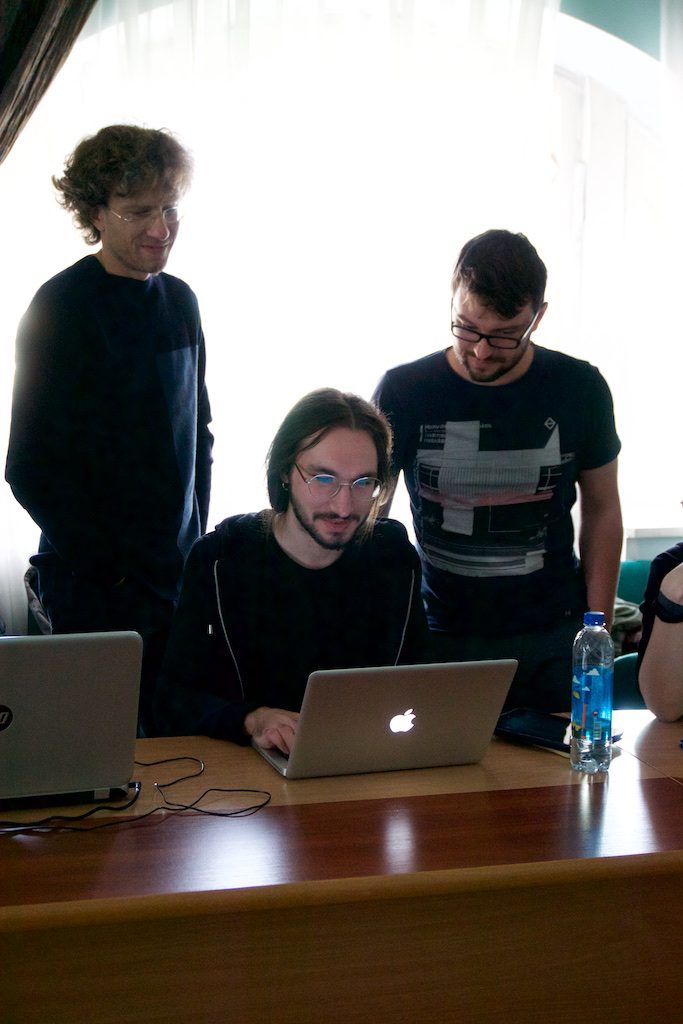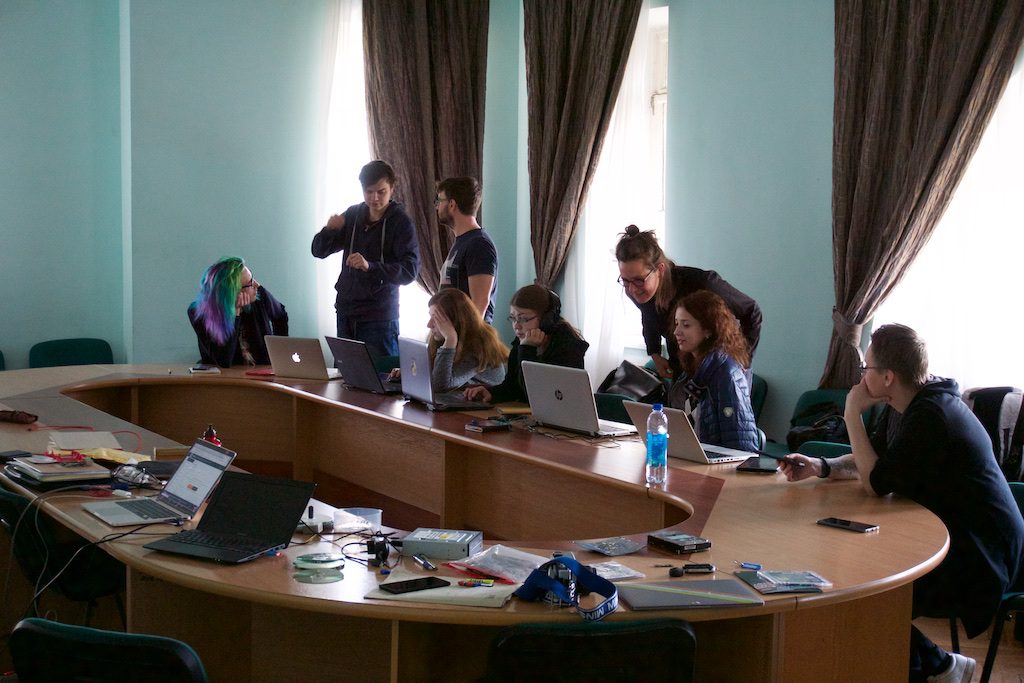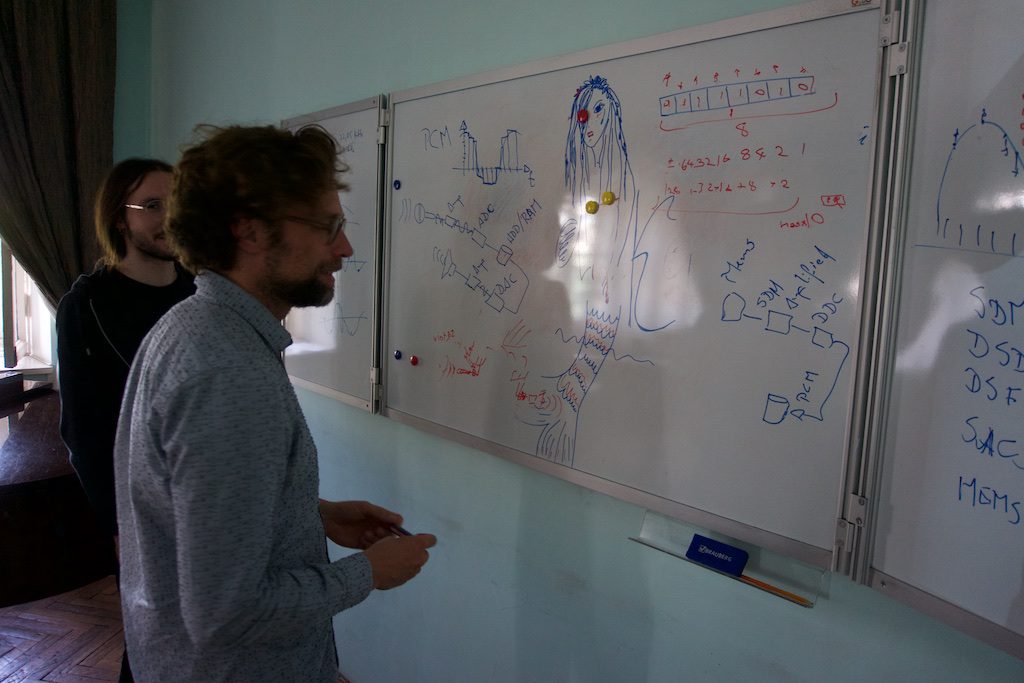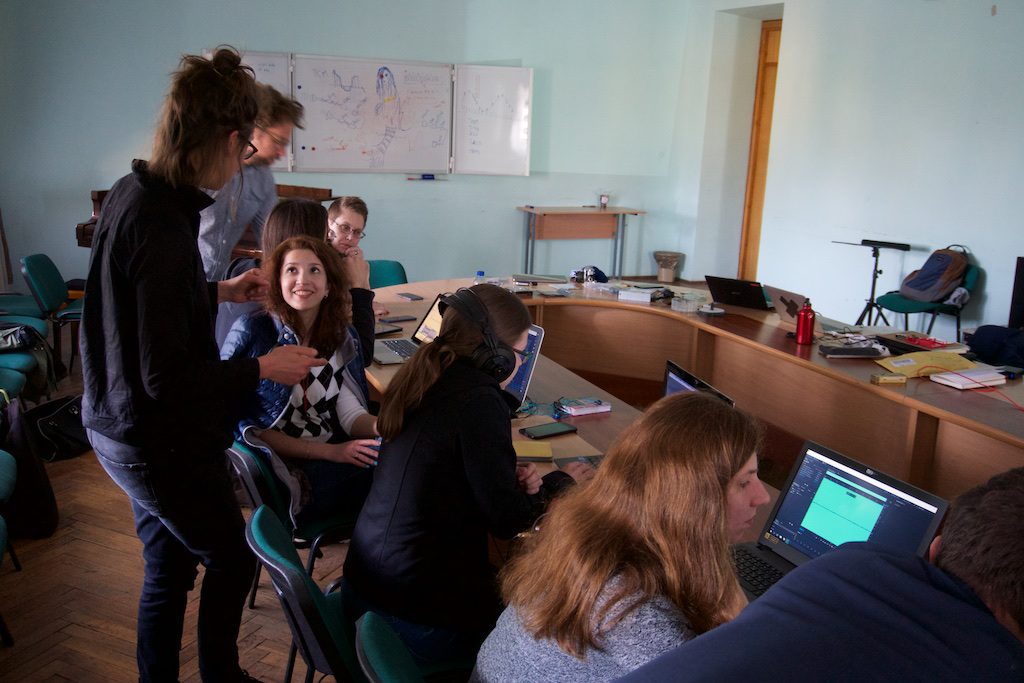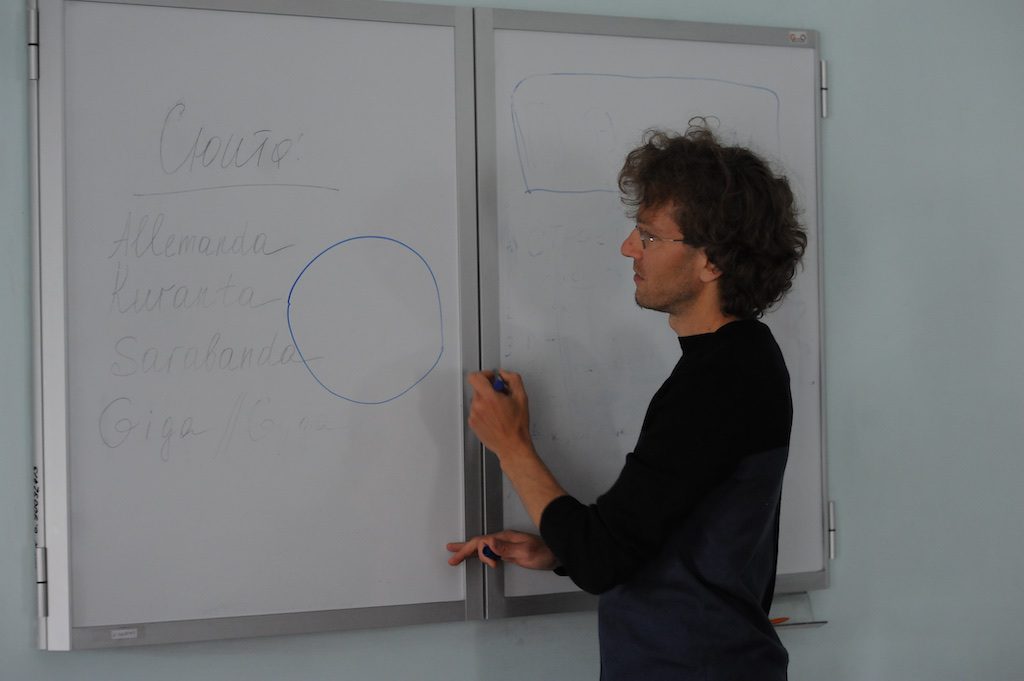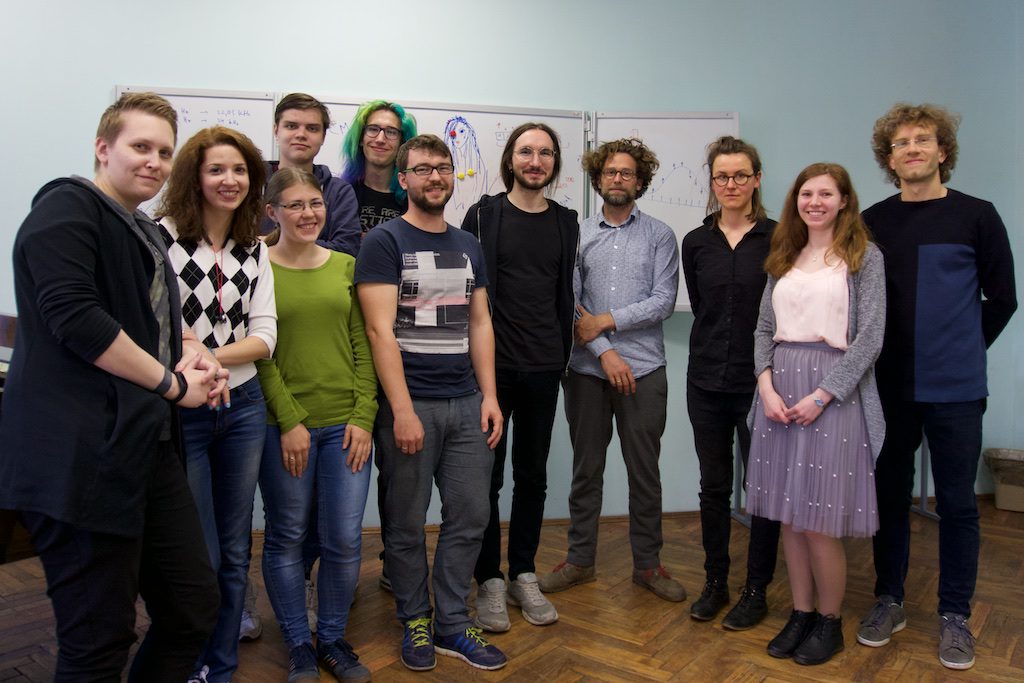European Researchers’ Night, September 27
We took part in this year’s European Researchers’ Night, showcasing a broad range of research projects at the University of Applied Arts Vienna.
From our ongoing research, we presented a couple of exemplary positions, such as Tobias Leibetseder’s “Fragments“, Almut Schilling’s and Till Bovermann’s “CD-R(ot)“, a part of Almut’s “The Carrier” installation, Till’s take on “Data Forensics”, as well as Thomas Grill’s “Mutual understanding” and “Reference Tone“.
Symposium Virtual Art at the Museum
The Rotting Sounds Project was part of a presentation at the Danube University reflecting on the museums collecting digital art.
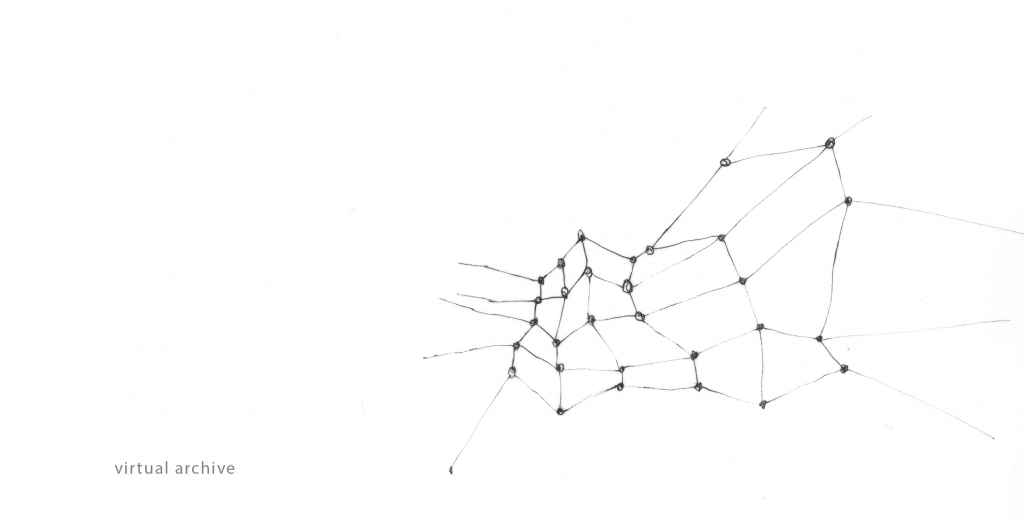
Mutual understanding @ Ars electronica AI x Music festival, September 7
Our installation “Mutual understanding“ was selected for the AI x Music festival, part of this year’s Ars electronica festival, taking place at the monastery of St. Florian.
We had a great outside location in the Garden of the Sommerrefektorium, even if the weather was partly rainy. The installation could withstand the humid weather.
Performances at the Auditorium: “Fragments”, October 2
The performance evening will revolve around Tobias Leibetseder‘s processual and constantly changing sculpture “Fragments“. It is in permanent development and consists of artifacts of the Rotting sounds research process. Waste, things collected, things stored and put aside, texts, pictures, data, sounds etc. are the basis of the shape-changing work. Object or exhibition, museum or archive, collection or documentation are moments of intrinsic research and decomposition, accompanying the process and resting in the distant but immediate eye of the observer.
Tobias Leibetseder‘s performance Transformation 1 is a transformation step and insight into the process of fragments. Artifacts as materials and sounds are transformed into new shapes and synthesized in a performative and concert act.
Angélica Castelló will present a performance based on recordings of her performance “Magnetic litany” from the opening evening of the Auditorium of Rotting sounds on March 29, 2019. It is connected to the permanently exhibited object “Magnetic Room“.
Elisabeth Flunger and Thomas Grill will jointly improvise on material and digital scrap. Everything seemingly valuable today will eventually transform into scraps. We take it as an aesthetic option.
October 2, 2019 19:00
Auditorium of Rotting sounds (Altes Auditorium)
University of Music and Performing Arts Vienna
Anton-von-Webern-Platz 1, 1030 Wien
As the audience will have to be limited, admission is on personal registration only.
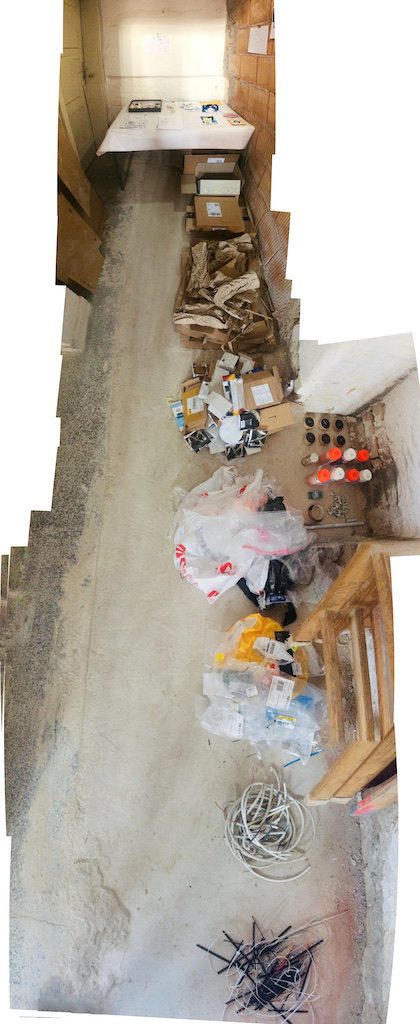
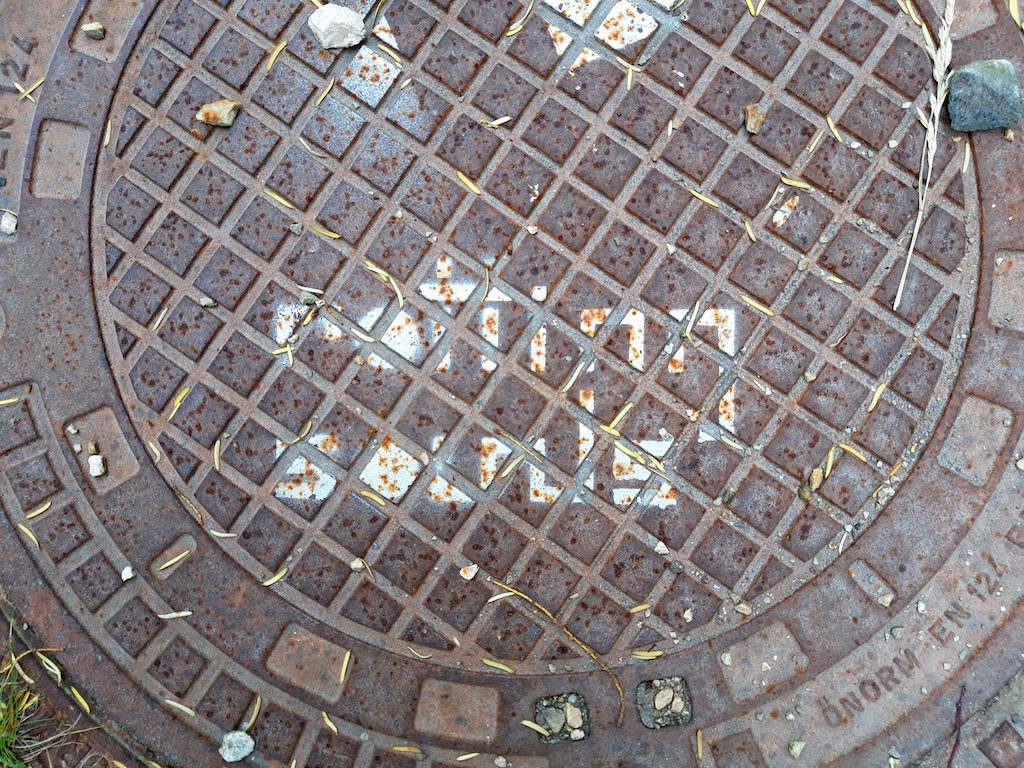
The pieces Magnetic litany 1 and 2 by Angélica Castelló have been made possible by the support of El Sistema Nacional de Creadores de Arte (FONCA).

Auditorium of Rotting sounds summer break
Due to the summer break at the University of Performing Arts Vienna, we suspend our regular opening times through July and August. Visiting the Auditorium is still possible by individual appointment, though.
Short interview on Rotting sounds
The Zentrum Fokus Forschung at the University of Applied Arts Vienna has produced a short interview with me explaining in very short the project of Rotting sounds. This was done in the context of the exhibition UNDERSTANDING – art & research at the Museum of Applied Arts in Vienna.
Exhibition opening: Understanding – Art and Research, MAK, June 27
The Rotting Sounds project has been invited to participate in the exhibition Understanding – Art and Research with a select object of our arts and research practice. We have produced the new object prototype “Reference Tone“, a variation on the existing object “Midnight Song“, exhibited at the Auditorium of Rotting Sounds.

Reference Tone is a printed representation of a pure sine tone of 1 kHz frequency at -3 dBFS volume. The encoding in 1 bit (DSD) audio is an ultra-high quality embodiment of the sound with the potential of being re-transferable into sound by optical means. Placed at a transitory spot in the exhibition, the object (and with it the embedded sound) will only stay pure and perfect for a certain time. Already at the opening, stains and scratches on the surface were noticeable, by visitors accidentally or purposefully walking over the object. Over the duration of the exhibition of one month, the audio content will transform from a “reference tone” into a sound being influenced by the context of its placement.
After the opening on June 27 at 7pm, the exhibition will run until July 28.
Museum of Applied Arts (MAK)
Stubenring 5, 1010 Wien, Austria
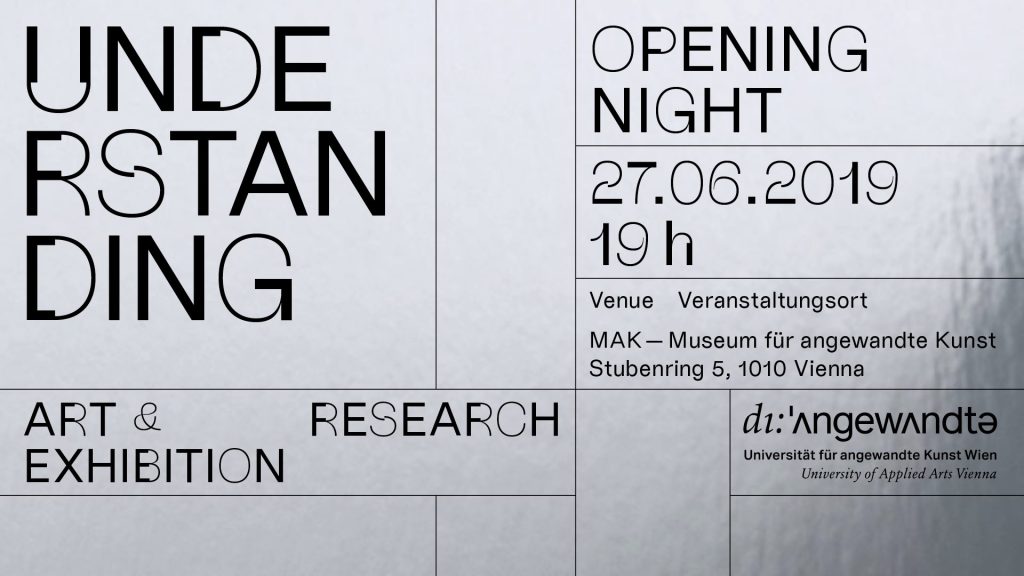
The University of Applied Arts Vienna presents exemplary approaches to its artistic research under the title UNDERSTANDING – ART & RESEARCH, it is about understanding as the very creative impulse. Through examples from research and teaching, science and art the transformation of society can be viewed, examined, sensed, discussed and experienced.
The exhibition UNDERSTANDING – ART & RESEARCH, developed by Gerald Bast, Alexander Damianisch and Barbara Putz-Plecko, now at MAK Vienna had first stations in New Zealand (Dunedin School of Art), Singapore (Nanyang Technological University Singapore), and Los Angeles (UCLA Art|Sci Center).
Digital audio vs. Compact Cassette – performance at the CCNL exhibition, June 13
We are delighted to take part in Wolfgang “Fadi” Dorninger’s exhibition “Cassette Culture Node.Linz” again, this time taking place in Vienna. The exhibition under the theme of “contact, document and exchange” elaborates on the cassette sharing culture having been extremely active in Linz in the 1980s and 90s.
Thomas Grill and Angélica Castelló will perform a multi-part set, combining their individual approaches using compact cassettes and players. Thomas will confront analog tape with digital sounds, using the medium as a transformation apparatus.

Printing new 1-bit audio object “Reference Tone”
For the upcoming exhibition UNDERSTANDING ART AND RESEARCH at the Museum of Applied Arts (MAK), we today printed the new prototypical audio object Reference Tone at the Digital Photography Lab at the University of Applied Arts.
It is a variation on the large-scale 1-bit audio print concept, similar to Midnight Song, as exhibited in our Auditorium of Rotting Sounds. Reference Tone represents a 1 kHz -3 dBFS sine tone at 44.1 kHz PCM sample rate, converted to a 1-bit DSD encoding with 64-times oversampling.
The director of the lab, Josef Schauer-Schmidinger supervised the printing of the 250 MB programmatically generated PDF file at 150 dpi bit structure size. The printed diameter of 100 cm contains approximately 30 Million bits, equivalent to about 10 seconds of very high quality audio.
Rotting sounds masterclass at Herzen University, St.Petersburg, May 23
The “rotting sounds” researchers Thomas Grill, Till Bovermann and Almut Schilling were invited to conduct a masterclass at the Institute of Music, Theater and Choreography of the Russian State Pedagogical University A.I. Herzen, above all with the students of Andrey Bundin.
After an introductory presentation on the concepts of the research projects, we worked with/on “digital artefacts” that each of the participants brought to the workshop. The focus was on the notion of the “digital trinity”, we have established, consisting of storage material, information content, and interpretation.
